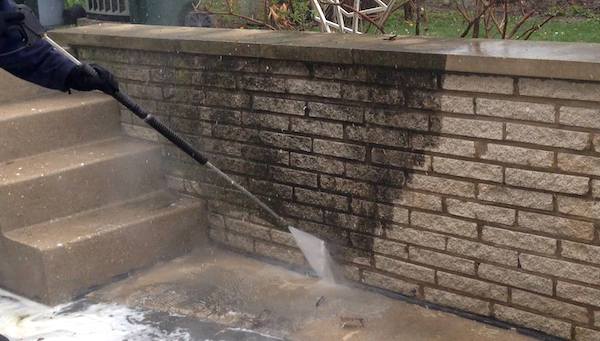
Power washing is one of the most effective ways to breathe new life into patios, driveways, walkways, and brick exteriors. But when you start blasting away dirt and mildew, there’s a valid concern that might cross your mind: Can pressure washing damage the grout or mortar between pavers and bricks?
The short answer is — yes, it can. But with the right technique, pressure settings, and tools, you can clean safely without destroying the structural integrity of your hardscapes.
Let’s dive into how power washing can affect mortar and grout, what causes damage, and how to prevent it while still achieving a great clean. 🧽🔍
🧱 Understanding Grout, Mortar, and Joint Sand
Before we get into risks, it’s important to understand what holds your hardscape together:
- Grout is typically found between tiles and sometimes on decorative brickwork. It’s a mix of cement, sand, and water.
- Mortar is the adhesive that binds bricks together in walls and structures. It’s stronger than grout and made for load-bearing purposes.
- Joint sand or polymeric sand is used between pavers (like in patios or walkways) to lock them into place and prevent weed growth.
These materials are porous and vulnerable to erosion under high pressure — especially when aged, cracked, or improperly installed.
⚠️ How Power Washing Can Cause Damage
- Too Much PSI
High pressure (especially anything over 3,000 PSI) can erode or blow out mortar and grout, particularly if they’re older or poorly cured. - Wrong Nozzle Type
Using a 0° (red) or 15° (yellow) nozzle concentrates the water in a tight stream, which can easily chip away joints and seams. - Holding the Nozzle Too Close
If the nozzle is within a few inches of the surface, you risk removing not just dirt—but the very material keeping the structure together. - Pre-existing Weaknesses
Cracked mortar, missing grout, or deteriorated sand joints are already compromised and can be worsened by water pressure.
🧰 Signs You’ve Damaged Mortar or Grout
- Gaps or holes between bricks or pavers
- Loose stones or shifting pavers
- Flaking or crumbling material in the joints
- Excessive sand being washed away
If you notice any of these after power washing, it’s time for some repair work before things get worse.
✅ How to Safely Power Wash Brick, Pavers, and Grout
1. Use the Right Pressure Setting
- Stick to 1,200–2,000 PSI for brick and grout
- Use 2,000–2,500 PSI for concrete pavers (only if joint sand is stabilized)
- Avoid anything stronger unless you’re a pro using specialty tips
2. Choose the Correct Nozzle
- Use a 25° (green) or 40° (white) tip for most surfaces
- Never use turbo nozzles near joints unless you’re resurfacing or replacing them
💡 A surface cleaner attachment is even better — it distributes water evenly and minimizes the risk of joint damage.
Browse Amazon Here For Top Rated Power Washers And Accessories
3. Keep the Wand Moving
Hold the wand at 12–18 inches away and maintain a steady sweeping motion. Don’t pause over the joints — the longer the stream stays in one place, the higher the risk of erosion.
4. Pre-Inspect and Patch First
Before power washing:
- Fill cracks or damaged mortar
- Reapply joint sand (especially polymeric sand, which needs curing time)
- Let repairs cure at least 24–48 hours before cleaning
🧱 Skipping this step often leads to costly rework.
5. Rinse Gently
Use a garden hose or low-pressure rinse to finish. If you’re applying detergent beforehand, let it soak in but don’t let it dry out — this prevents streaking and harsh residue.
🧼 After-Care Tips
Once your surface is clean and dry:
- Reapply polymeric sand between pavers if any has washed away
- Seal the surface with a breathable paver or brick sealant to protect against erosion
- Check mortar joints every few months and re-point if needed
🌧️ Bonus: Sealing also helps protect against future mildew, water intrusion, and cracking caused by freeze/thaw cycles.
🚫 When to Hire a Pro
You might want to bring in a professional if:
- Your mortar is older than 10 years
- You see widespread cracking or erosion
- You’re dealing with historic brickwork or delicate decorative grout
- You need repairs and cleaning combined
✅ Final Thoughts
Power washing can freshen up your brick and paver surfaces—but it comes with the responsibility of protecting what holds them together. With the right nozzle, pressure, and prep work, you can enjoy spotless surfaces without compromising their durability.
The key is simple: clean gently, inspect often, and never underestimate the power of water. 🧱💧🧼
Browse Amazon Here For Top Rated Power Washers And Accessories






